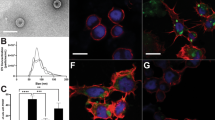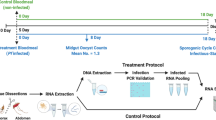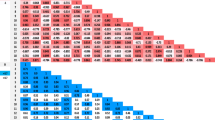Abstract
PAPADANIEL1 has reported, under the name of ‘gâle microfilarienne’, a dermatosis affecting horses and mules in Greece. The disease is associated with the presence of microfilariæ in the skin lesions. Analogy with filariasis elsewhere would suggest that the infection is insect-borne. From the available literature it appears that the natural vectors in Greece have not previously been described.
This is a preview of subscription content, access via your institution
Access options
Subscribe to this journal
Receive 51 print issues and online access
$199.00 per year
only $3.90 per issue
Buy this article
- Purchase on SpringerLink
- Instant access to full article PDF
Prices may be subject to local taxes which are calculated during checkout
Similar content being viewed by others
References
Papadaniel, Ann. Méd. Vét. (Oct. 1936).
Fülleborn, "Handbuch der Pathogenen Mikroorganismen", 8 (1928).
Author information
Authors and Affiliations
Rights and permissions
About this article
Cite this article
ABBOTT, J., RODEN, A. & YOELI, M. Anopheline Mosquitoes as Natural Vectors of Equine Dermal Filariasis. Nature 158, 913 (1946). https://doi.org/10.1038/158913a0
Issue date:
DOI: https://doi.org/10.1038/158913a0



